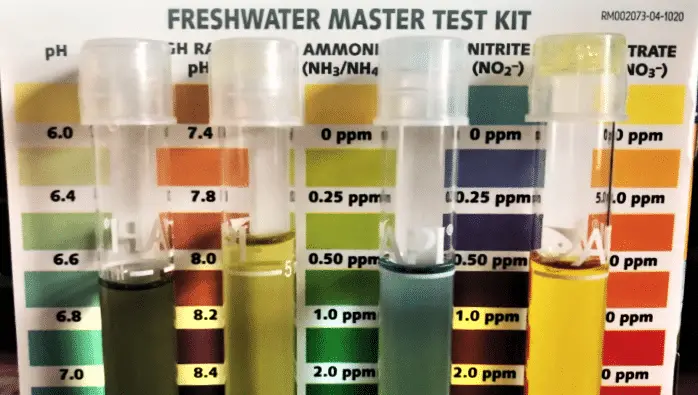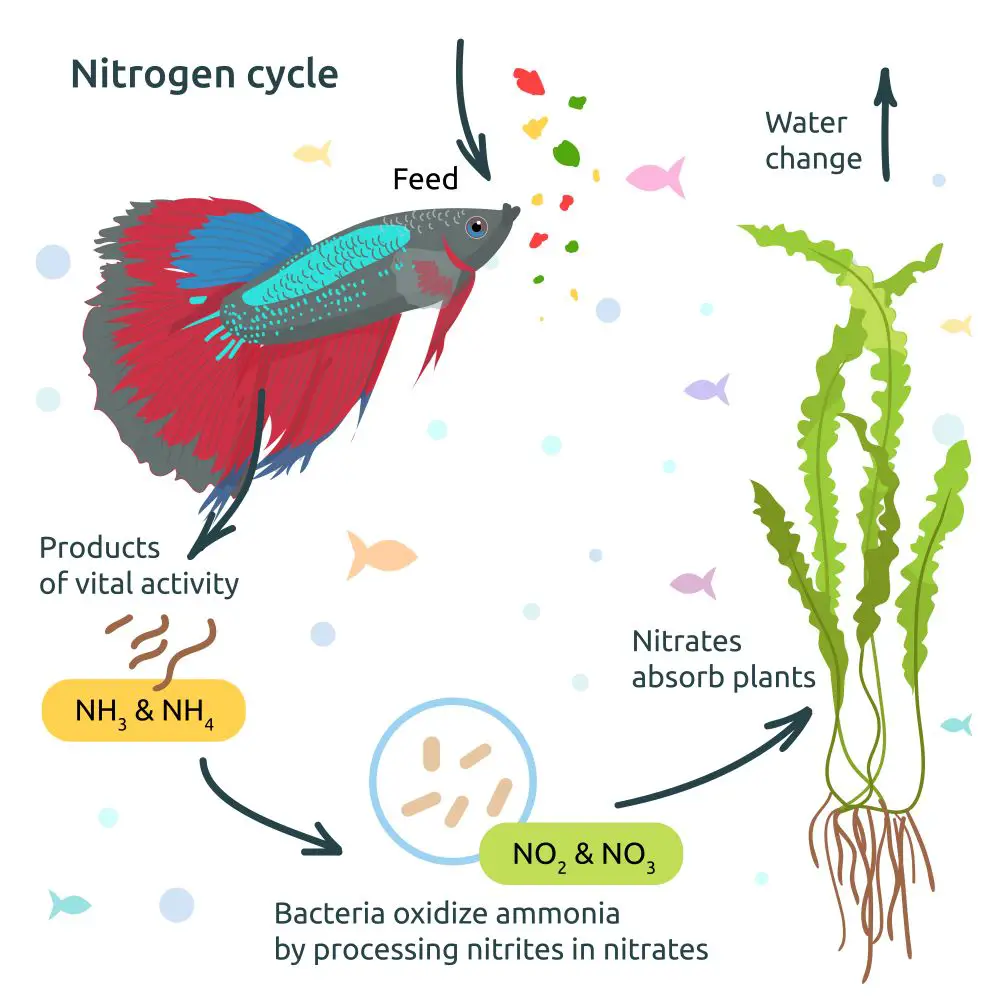So, you’re considering getting into shrimp keeping, but you’ve heard it can be tricky. Or maybe you’ve already taken the plunge, bought some shrimp, and now they’re not doing so well in your new tank. Don’t stress, you’re in the right place.
I’m here to guide you through the most common mistakes new shrimp keepers make, so you can avoid them and keep your shrimp happy and healthy.
The top three mistakes that new shrimp keepers often make are overfeeding, ignoring water parameters , and inadequate tank cycling. But don’t worry, we’ve all been there, and the good news is that these mistakes are easily avoidable with a bit of knowledge and care.
, and inadequate tank cycling. But don’t worry, we’ve all been there, and the good news is that these mistakes are easily avoidable with a bit of knowledge and care.
As a fellow shrimp enthusiast, I’ve had my fair share of ups and downs in the shrimp keeping journey. I remember the early days when I was starting out, and my excitement quickly turned into worry as I noticed my shrimp behaving oddly. I was overfeeding them, thinking more food meant happier shrimp. Boy, was I wrong!
Then there were times when I ignored the water parameters, assuming that everything was fine as long as the water looked clear. And let’s not forget about when I was so eager to get started that I didn’t correctly cycle my tank.
These mistakes cost me a few shrimp, and I learned the hard way that shrimp keeping isn’t just about providing food and water; it’s about creating a balanced environment that mimics their natural habitat.
Over the years, I’ve learned to avoid these common pitfalls, and my shrimp have been happier (and more prolific) for it.
So, stick around if you’re a new shrimp keeper, or even if you’ve been at it for a while but are facing some challenges. In this article, we’ll delve into these common mistakes and provide some practical tips on how to avoid them. Trust me, your shrimp will thank you!
How does overfeeding affect shrimp?

Overfeeding shrimp is a common mistake that can have serious consequences. You see, shrimp are a bit like kids in a candy store. If there’s food available, they’ll eat it, even if they’re not really hungry.
But unlike kids, shrimp can’t just run around to burn off those extra calories. Instead, the excess food can lead to poor water quality, which in turn can cause health problems for your shrimp.
When you overfeed your shrimp, the uneaten food doesn’t just disappear. It breaks down in the water, leading to an increase in ammonia levels.
levels.
Ammonia is toxic to shrimp, and high levels can cause stress, illness, and even death. Overfeeding can also lead to a spike in nitrate levels, which can cause similar problems.
But that’s not all. Overfeeding can also lead to an overgrowth of algae and other microorganisms in your tank . While some algae
. While some algae and microorganisms are beneficial, too much can upset the balance of your tank and make it harder for your shrimp to thrive.
and microorganisms are beneficial, too much can upset the balance of your tank and make it harder for your shrimp to thrive.
So, how can you avoid overfeeding? The key is to feed your shrimp only what they can eat in a few hours. If you see uneaten food after this time, it’s a sign that you’re feeding too much. It’s also a good idea to monitor your water parameters regularly to ensure that they’re within the safe range for your shrimp.
range for your shrimp.
Remember, when it comes to feeding shrimp , less is often more. Your shrimp will be healthier and your tank cleaner if you resist the temptation to overfeed.
, less is often more. Your shrimp will be healthier and your tank cleaner if you resist the temptation to overfeed.
Why are water parameters crucial for shrimp health?

Water parameters are like the invisible lifelines of your shrimp tank. They might not be something you can see, but they play a pivotal role in the health and wellbeing of your shrimp.
Shrimp are sensitive creatures and they thrive in specific conditions. Any significant deviation from these conditions can lead to stress, disease, or even mortality among your shrimp population .
.
Let’s start with the basics: pH, temperature, and hardness. Different shrimp species require different ph values so you should research this before you get shrimp, a stable temperature that aligns with their species-specific needs, and a specific range of water hardness . These parameters are crucial for their metabolic processes, shell development, and overall health.
. These parameters are crucial for their metabolic processes, shell development, and overall health.
Next up, we have ammonia, nitrite, and nitrate levels. These are byproducts of the biological processes in your tank, including waste breakdown. High levels of ammonia and nitrites are toxic to shrimp and can lead to immediate health issues. Nitrates, while less toxic, can still cause problems in high concentrations.
are toxic to shrimp and can lead to immediate health issues. Nitrates, while less toxic, can still cause problems in high concentrations.
 Lastly, we have the lesser-known but equally essential parameters like KH (Carbonate Hardness) and GH (General Hardness). These parameters give you an idea of the mineral content in your water, which is essential for shrimp to molt and grow.
Lastly, we have the lesser-known but equally essential parameters like KH (Carbonate Hardness) and GH (General Hardness). These parameters give you an idea of the mineral content in your water, which is essential for shrimp to molt and grow.
Ignoring these water parameters is like driving blindfolded. You might get lucky for a while, but eventually, you’re bound to run into problems.
Regular testing and adjustments can help maintain optimal conditions in your tank, ensuring your shrimp live long, happy lives. Remember, a happy shrimp is a healthy shrimp!
What is the importance of proper tank cycling in shrimp keeping?

Imagine moving into a new house, only to find out that the plumbing doesn’t work, the electricity is out, and there’s no heating or cooling. Sounds like a nightmare, right? Well, that’s what it’s like for shrimp when they’re introduced into a tank that hasn’t been properly cycled.
Tank cycling, also known as the nitrogen cycle, establishes beneficial bacteria in your tank that convert harmful waste products into less harmful substances.
When your shrimp eat and produce waste, they create ammonia, which is highly toxic. Without a well-established cycle, this ammonia builds up and can quickly lead to shrimp fatalities.
But here’s where the magic of the nitrogen cycle comes in. In a cycled tank, beneficial bacteria convert this harmful ammonia into nitrites, which are still toxic but less so.
Then, another type of bacteria converts these nitrites into nitrates, which are much less harmful and can be absorbed by plants or removed through water changes.
Skipping or rushing the cycling process is like building a house without foundation. It might look okay for a while, but it’s a disaster waiting to happen. A properly cycled tank provides a stable, healthy environment for your shrimp, reducing stress and increasing their chances of survival.
So, take your time with the cycling process. Your shrimp will thank you for their new, well-functioning “house”! And remember, in shrimp keeping, patience isn’t just a virtue, it’s a necessity.
Professional Shrimp Breeder Tip
One pro tip to get you started: Don’t underestimate the power of plants. Adding a lot of plants to your tank from the get-go can speed up the cycling process.
from the get-go can speed up the cycling process.
These green allies feed directly on the harmful elements that shrimp aren’t fans of, helping to create a safer environment for your shrimp more quickly.
In Closing: The Art of Shrimp Keeping
Ultimately, shrimp keeping is a delicate balance of providing the right food in the right quantities, maintaining optimal water parameters, and ensuring a properly cycled tank. It’s a labor of love that requires patience, diligence, and a willingness to learn.
But when done right, it’s an incredibly rewarding hobby that brings a piece of the underwater world right into your living room.
Remember, every shrimp keeper, no matter how experienced, started out as a beginner. Mistakes are part of the learning process, and they’re nothing to be ashamed of. What matters is that you learn from them and use that knowledge to provide a better environment for your shrimp.
On a final note, don’t hesitate to reach out if you need any help. Shrimp keeping is a community, and there are plenty of experienced keepers who are more than willing to lend a hand.
If you can’t reach me here, check out the Aquarium Shrimp Keeping group on Facebook. It’s a treasure trove of information and a great place to connect with fellow shrimp enthusiasts.
So, here’s to you, future shrimp maestro. May your tanks be clean, your shrimp be healthy, and your journey be filled with joy.
Happy Shrimp Keeping!
FAQ on Shrimp Keeping
Q. How hard is it to maintain a shrimp tank?
A. Maintaining a shrimp tank isn’t necessarily hard, but it does require consistent care and attention. This includes regular feeding, monitoring water parameters, and ensuring the tank is properly cycled. With a bit of knowledge and dedication, you can create a thriving environment for your shrimp.
Q. What do shrimp need to survive?
A. Shrimp need clean water with the right parameters (pH, temperature, hardness, ammonia, nitrite, and nitrate levels), a well-cycled tank, and appropriate food. They also benefit from a tank with plenty of hiding spots and a stable environment.
Q. What is the easiest shrimp to keep?
A. The Red Cherry Shrimp is often recommended for beginners due to its hardy nature and easy care requirements. They are adaptable to a range of water conditions and are known for their vibrant color and active behavior.
Q. How often should I do water changes for shrimp?
A. The frequency of water changes can depend on several factors, including the size of your tank, the number of shrimp, and the quality of your filtration system. However, a general rule of thumb is to perform a 10-20% water change every week.
Q. How many shrimp can I keep in my tank?
A. The number of shrimp your tank can support depends on its size and the species of shrimp. A common guideline is to have 10-15 shrimp per five gallons. However, it’s always better to err on the side of caution and avoid overstocking.
